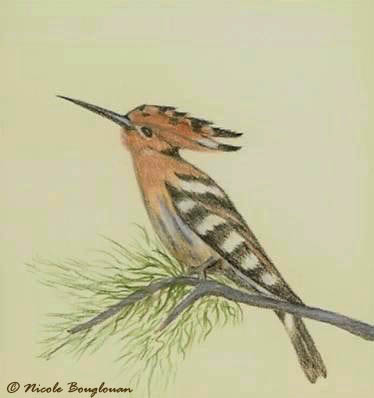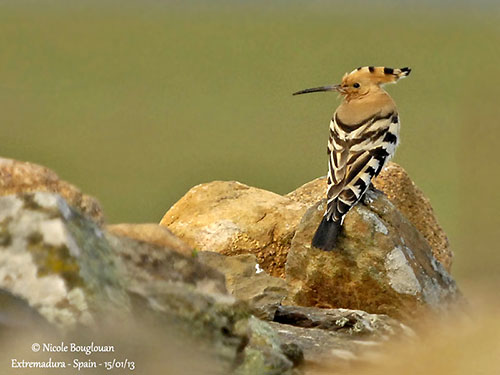
Text and illustration by Nicole Bouglouan
Photographers :
John Anderson
John Anderson Photo Galleries
José Luís Beamonte
Pájaros de España
Jean-Claude Billonneau
GALERIE
Jean Michel Fenerole
Photos d’Oiseaux du monde
Dubi Shapiro
Dubi Shapiro Photo Galleries
Françoise Vareille - La reproduction de la Huppe fasciée 2017
Callie de Wet
GALLERY
Nicole Bouglouan
Photographic ramble
Sources :
HANDBOOK OF THE BIRDS OF THE WORLD Vol 6 by Josep del Hoyo-Andrew Elliott-Jordi Sargatal - Lynx Edicions, 2001 - ISBN: 848733430X
Paleornithology of St Helena Island, south Atlantic Ocean
Storrs L. Olson. (1975). Smithsonian Contributions to Paleobiology – Number 23
Wikipedia, the free encyclopaedia
ScienceBlogs - Hoopoes and woodhoopoes
FAMILY UPUPIDAE
Hoopoes
The family Upupidae gathers four species of the genus Upupa, including one extinct species, the Saint Helena hoopoe (Upupa antaios). This species was endemic to Saint Helena Island in the South Atlantic Ocean. It was probably flightless, following the discovering of a left humerus, significantly different from that of other Upupidae species.
The three other species are found in the Old World and are widespread in Europe, Asia, and North Africa, Sub-Saharan Africa and Madagascar.

The extinct Saint Helena Hoopoe was also known as Giant Hoopoe. It is only known from incomplete subfossil skeleton.
The British zoologist Philip Ashmole identified and illustrated a left humerus similar to that of Upupa epops. Later, in July 1971, more material representing most of the skeleton of this bird was collected by the palaeontologist Storrs L. Olson, indicating that this island species was quite different and distinct from the mainland hoopoes.
The Saint Helena Hoopoe was probably a giant of its kind. Both cranial and hindlimb elements were longer and heavier than in Upupa epops, whereas the distal wing elements were more reduced. The femur was 19% greater than in Upupa epops, whereas the widths of the hindlimb elements were about 33% larger. This bird was a large hoopoe, but with much restricted power of flight, or maybe entirely abrogated.
The island provided terrestrial invertebrates such as the world’s largest earwig, Labidura herculeana, of almost 8 centimetres in length. This Dermaptera was living in burrows or under stones in dry soil. It is considered extinct since 2014. This type of prey was probably suitable for Upupa antaios, thanks to its long, decurved bill allowing it to probes into the ground while searching for prey.
The Saint Helena Hoopoe is presumed to have gone extinct following both discovery and colonization of the island, hunted to extinction by humans and killed by introduced predators, probably died out after 1502.
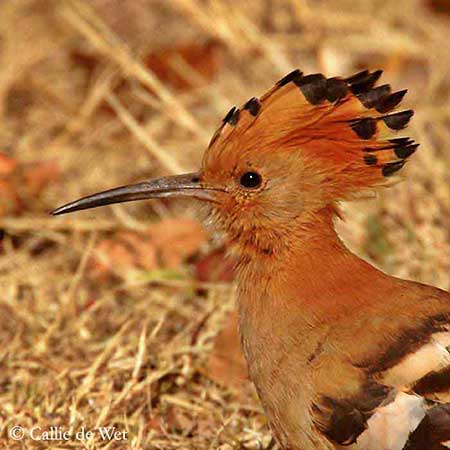
The three living hoopoes are medium-sized birds and the most distinctive morphological feature is the conspicuous fan-like erectile crest with broad black tips. The bill is long and slightly decurved. The broad, rounded wings and the square-ended tail are black and white.
The plumage of the Eurasian Hoopoe is pinkish to sandy-buff on head, neck and mantle, and more pinkish on the underparts. Rump and belly are white. The African Hoopoe is darker and more chestnut, whereas the Madagascan Hoopoe has dull grey mantle and is larger than the three living species. Formerly, only one species, Upupa epops was in this genus, with several subspecies.
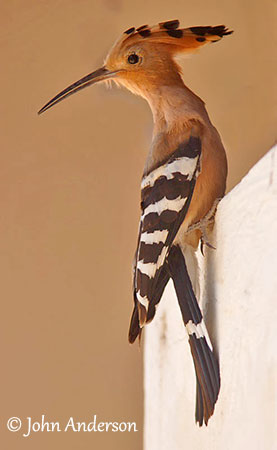
Hoopoes have an erratic, butterfly-like flight involving strongly undulating pattern. The flight is strong and the bird is able to reach considerable speed and manoeuvrability when pursuing prey in the air.

They live in farmland with old buildings and walls providing nesting cavities to these birds, in pastures bordered with trees, wooded steppes, savannas and plantations. They need primarily low cliffs and dry banks in which they can nest.
The African Hoopoe also frequents open and brushy areas. The densities are usually higher near villages and habitations providing more nesting sites.
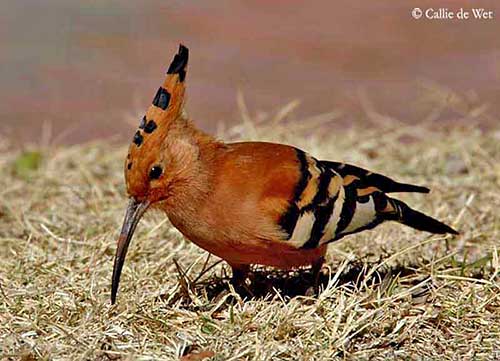
Hoopoes are not very gregarious. They feed singly or in pairs and are diurnal. At dusk, they roost mainly in trees, in pairs or solitary. Upupidae feed almost entirely on animal food, occasionally supplemented by seeds, berries, leaves, stems and rhizomes. They are mainly insect-eaters and use their long, decurved bill to extract ground-living prey, larvae and pupae of insects. The diet consists of beetles and their larvae, caterpillars, pupae of moths, locusts, grasshoppers, bugs, cicadas and others, including ants. Lizards are also taken, and the largest prey are beaten on the ground before to be eaten.

They breed solitary and the pairs are territorial. The male gives a typical advertising song, a resonant, hooting phrase “hoop-hoop-hoop” uttered from a perch high in tree or from a rooftop. This call gives the bird its name. These repeated phrases may consist of 2, 3, 4 or 5 notes, and a short pause commonly occurs between each phrase. The male’s songs with long phrases are known to attract more females than males with shorter calls.
The male’s song of the Madagascan Hoopoe is mostly a soft, resonant, rolling purr “rrrrààààooooo” regularly repeated.
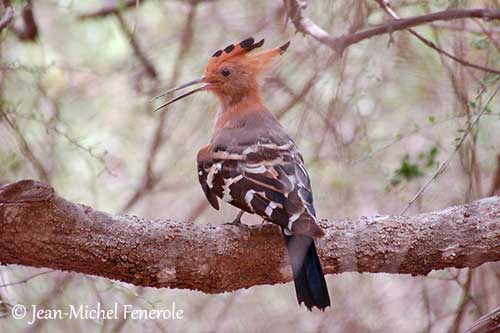
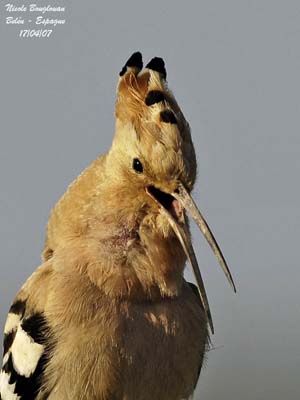
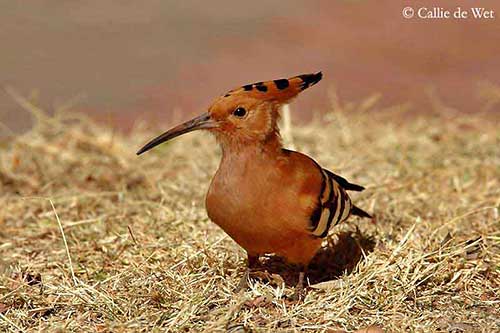
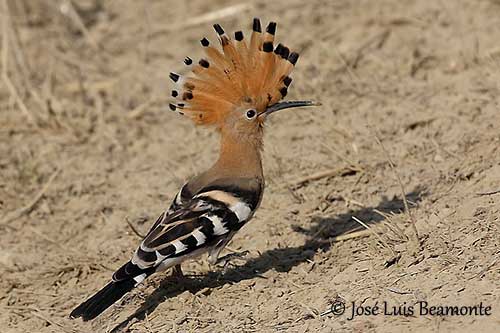
During the pre-breeding period, courtship feeding begins. Then, the male starts to search for nest-sites and establishes the territory.
The migrating hoopoes arrive singly in spring, often the male first, and the pair forms when the females arrive. The male selects a nest-site and attracts the female by moving excitedly in and out of the cavity. The pair-bond is consolidated during two weeks and copulation occurs regularly, following courtship feeding.
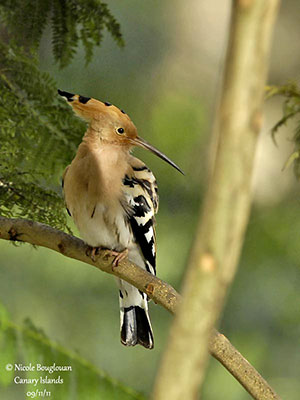
The nest is in a hole in tree or wall, rocky crevice or in old building, and even in termite mound. Nest-boxes and other artificial structures can be regularly occupied. The nest is placed from 2 to 12 metres above the ground. The male, sometimes with the female, clears the cavity but they do not excavate. There is little or no nest material added in the cavity, but in some cases, grass, leaves, wool and feathers can be used as lining.
The clutch size varies depending on the range. The hoopoes usually lays between five and twelve eggs, usually mostly six to nine creamy-white eggs becoming progressively pale dirty grey. They are laid at daily intervals.
The female incubates alone but she is often fed by the male. The hatching occurs after 15-18 days of incubation. The downy chicks are white first, but they are quickly covered in long spiny quills prior to feather’s appearance. The nestling period lasts about 25-30 days.
In response to predators, both female and young produce an evil-smelling fluid resembling to rotting meal. In addition, six days old nestlings are able to squirting liquid faeces and cloacal contents at intruder in the nest. However, the chicks usually defecate along the rear wall of the cavity and the nest-hole becomes rapidly foul-smelling.
Hoopoes usually produce one brood per season, but several pairs may have two broods and the breeding success seems to be relatively high.
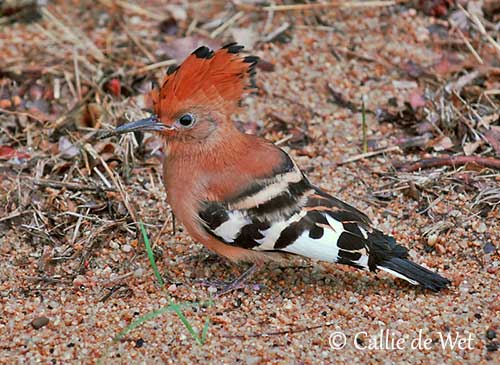
Juvenile
The most part of the northern populations migrates to tropical regions in winter, but the African birds are resident in their range.
The Eurasian Hoopoe is fairly common to locally common throughout the large range and the species is protected in numerous countries. According to the range, it may be vulnerable or endangered, due to disturbances, hunting, cutting of old trees and use of pesticides.
The African Hoopoe has some predators such as birds of prey, but the species is common and widespread in South Africa.
The Madagascan Hoopoe is not globally threatened. It is common and widespread in most of range. The population is suspected to be increasing on C Plateau and in E, following deforestation.
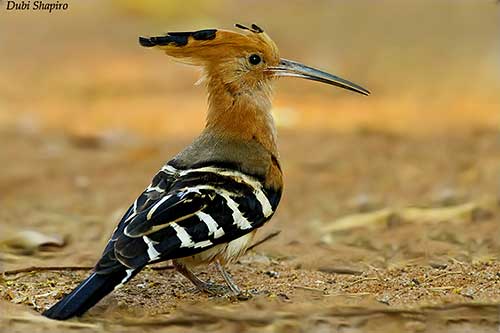
The beautiful appearance of the hoopoes makes them very attractive. They have won a special place and are part of a long tradition in human culture. In addition, hoopoes are considered controllers of various agricultural pests and this fact has been recognized in numerous areas.
Hoopoes are found in a large range covering a vast area, from the Gulf of Finland in the north to Cape Town in the south, but also from Senegal in the west to the lower Amur River in the east, with only some breaks for deserts, forest and mountains. They are among the few bird species that can be found in such continuity of range.
